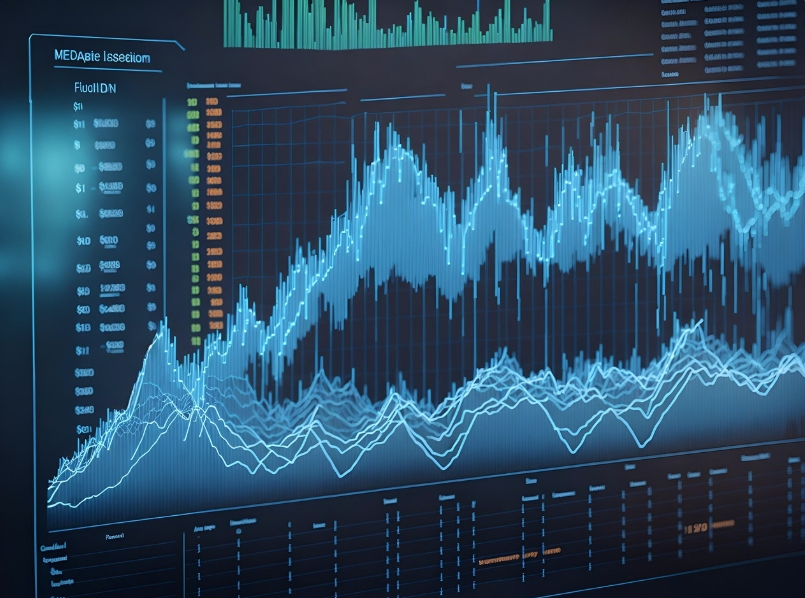Plotio
Finance

【Index Special】Domestic and External Troubles Impact U.S. Stocks Tread Cautiously

Since the U.S. government shutdown, the trends of the three major U.S. stock indices have clearly turned cautious, with any minor disturbance potentially triggering sharp market fluctuations. Particularly after the announcement of the new round of tariff policies on October 10, U.S. stocks suffered a "Black Friday": the Dow Jones Industrial Average plummeted 878.82 points, a drop of 1.9%; the Nasdaq Composite Index tumbled 820.20 points, a sharp decline of 3.56%; and the S&P 500 Index fell 182.60 points, a decrease of 2.71%. The government shutdown has intensified market wait-and-see sentiment, while the escalation of tariffs has directly triggered panic. However, these factors may also prompt the Federal Reserve to accelerate its rate-cutting pace, thereby providing long-term support for U.S. stocks. The current short-term correction may create an excellent buying opportunity.
Shutdown Fails to Halt Stocks Tariffs Are the Key
From the actual trend, the U.S. government shutdown has not caused a severe impact on the stock market. Since October 1, the Dow Jones Index has seen a maximum gain of over 2%, the Nasdaq Index a maximum gain of over 3.4%, and the S&P Index a maximum gain of over 2%. Although the market has become cautious, there has been no obvious pessimism. Despite the ongoing U.S. government shutdown, the Democratic and Republican parties will eventually reach an agreement on the debt ceiling. The current deadlock stems more from insufficient bargaining chips from both sides, and the market has gradually adapted to this annual political farce.
However, during intraday trading on October 10, after Trump posted tough remarks on China on social media platforms, U.S. stocks quickly turned lower, and market expectations deteriorated sharply. Imposing 100% tariffs means that China-U.S. trade may once again stall, and U.S. citizens and enterprises will bear heavier tax burdens. It is estimated that U.S. consumers will ultimately bear 55% of the tariff costs, and enterprises will bear approximately 22%, which may further push up inflationary pressures. Since the beginning of this year, U.S. tariff policies have driven core personal consumption expenditures up by 0.44%, and inflation is expected to rise to 3% by December.
Fed May Accelerate Rate Cuts
Peng Cheng, a market strategist at Zhisheng Research(exclusively invited by Plotio), opined that from a medium-to-long-term perspective, the current bearish factors for U.S. stocks may gradually turn into bullish ones. Firstly, this abnormal tariff situation is unlikely to last. In April this year, China and the U.S. briefly entered the "three-digit tariff" stage, which resulted in economic damage to both countries, declining corporate profits, and global supply chain chaos. Based on the game process in April, there is still significant room for maneuver in this round of tariff negotiations. China and the U.S. reached some consensus in September, and both sides formed a certain tacit understanding on their bottom lines and demands, i.e., temporarily maintaining the status quo. This round of tariffs may be a move by Trump to divert domestic pressure, and as the government shutdown ends, there is hope for a turnaround in the tariff issue.
Secondly, to prevent economic deterioration, the Federal Reserve may accelerate its rate-cutting pace. In a recent speech, Fed Chair Jerome Powell strongly hinted at a possible rate cut in October, noting that there are significant downside risks in the U.S. labor market, with both labor supply and demand weakening. The market expects the probability of the Fed announcing the second rate cut of the year at its meeting later this month to exceed 90%. In addition, Powell also suggested that the balance sheet reduction process may end in the next few months, and major investment banks have advanced their forecasts for the Fed to end balance sheet reduction from the first quarter of next year to this year. The total reserves of banks in the Federal Reserve system have dropped to $3.03 trillion, having briefly fallen below $3 trillion earlier, not far from the critical line of $2.7 trillion. It is necessary for the Fed to end balance sheet reduction early to ease pressure on the money market.
Both tariff disputes and monetary policy adjustments may become catalysts for the medium-to-long-term upward trend of U.S. stocks, and there may even be a "golden pit" (a favorable buying opportunity amid a dip).
Technical Analysis:For the Dow Jones Index: The daily chart shows a downward shift in the center of gravity, but the previous large bearish candle has been mostly repaired. If the price does not break below the 45,100 level, it may form a new continuation pattern, with the potential to challenge the previous high.
For the Nasdaq Composite Index: The daily chart has repaired the previous large bearish candle,and the pattern has not been significantly damaged. In the short term, focus on the support level around 23,600 below.
[Important Disclaimer:The above content and views are provided by Zhisheng, a third-party cooperative platform, for reference only and do not constitute any investment advice. Investors who trade based on this information shall bear their own risks.]
In the event of any inconsistency between the English and Chinese versions, the Chinese version will prevail.This article is from Plotio. Please indicate the source when reprinting.





 Download APP
Download APP
 ZhiSheng Live
ZhiSheng Live











